Mercifully the speed limit lifts, but frustratingly, given we’re on an autobahn, the traffic continues to hamper our efforts to enter the fast lane.
Luckily, on the oldest stretch of the A92 between Munich and the foothills of the Bavarian Forest, our patience is rewarded with the day’s first chance to give these two German warriors some stick – the combatants being the freshly minted Porsche 991.2 911 GT3 and Mercedes-AMG GT R.
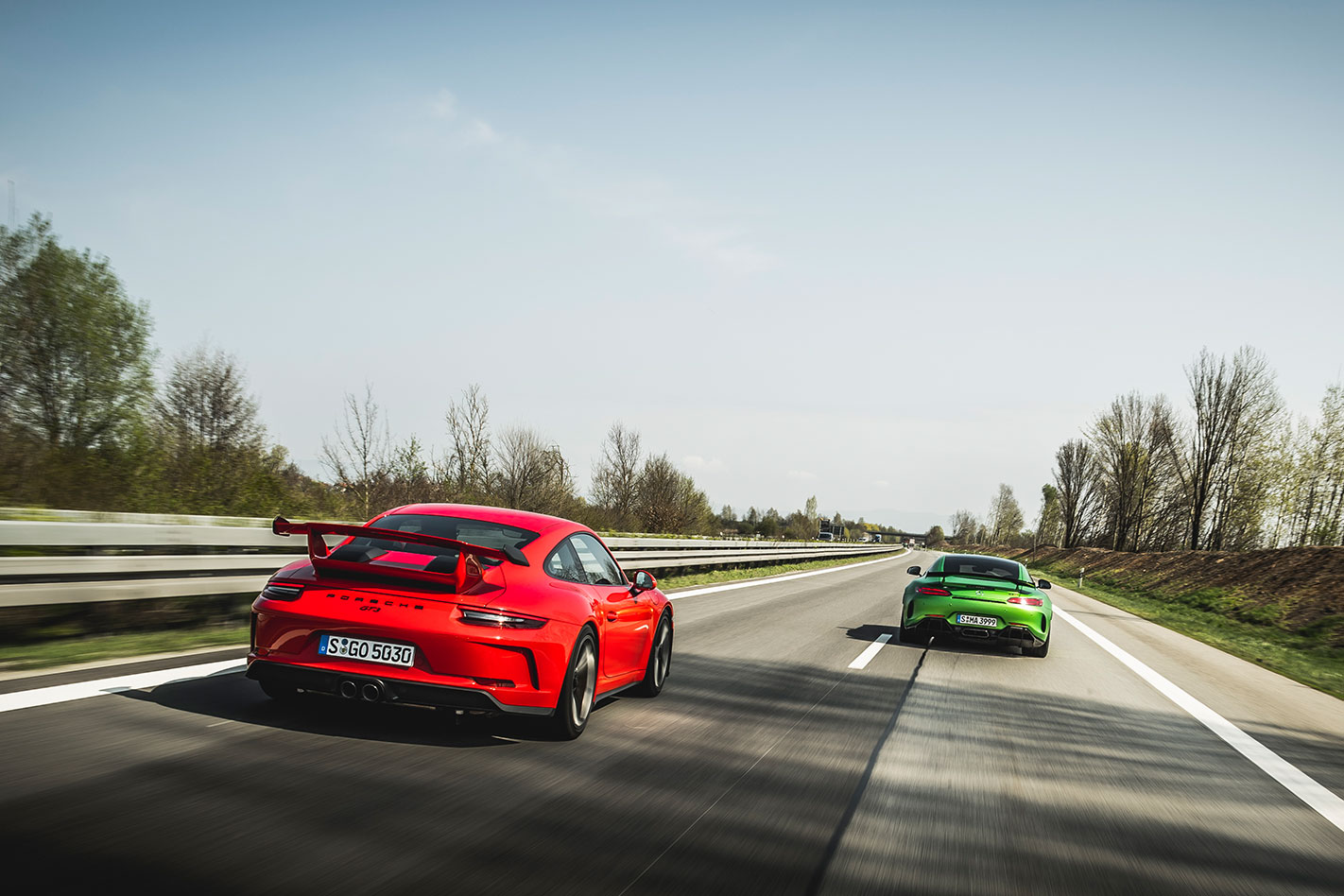
Between the two, front- or rear-engined, street cred is in abundance. It’s all mighty rear wings, big wheels and ostentatious proportions.
While the front end of the Mercedes AMG GT R looks rather intimidating, the curved, stubby rear almost seems at odds with bold front facade. Porsche has cleaned up the snout of the Porsche GT3, which deserves the optional lift system to protect its rubber chin.
Back on the road and the Porsche is leading the Benz when the first proper gap presents itself, but it doesn’t stay in the GT3’s mirrors for long. That’s what loads of instant torque – 700Nm to be exact – can do to one of Stuttgart’s finest.
In just about any gear, from rest to an identical top speed, the menacing Merc has the Porsche covered – in a straight line, at least. Yet, the driver in the GT3 is hardly playing second fiddle here.
With the loud pedal pinned to the firewall, he is totally engulfed in his own mind-boggling stratosphere, celebrating each blaring 9000rpm upshift with a smile.
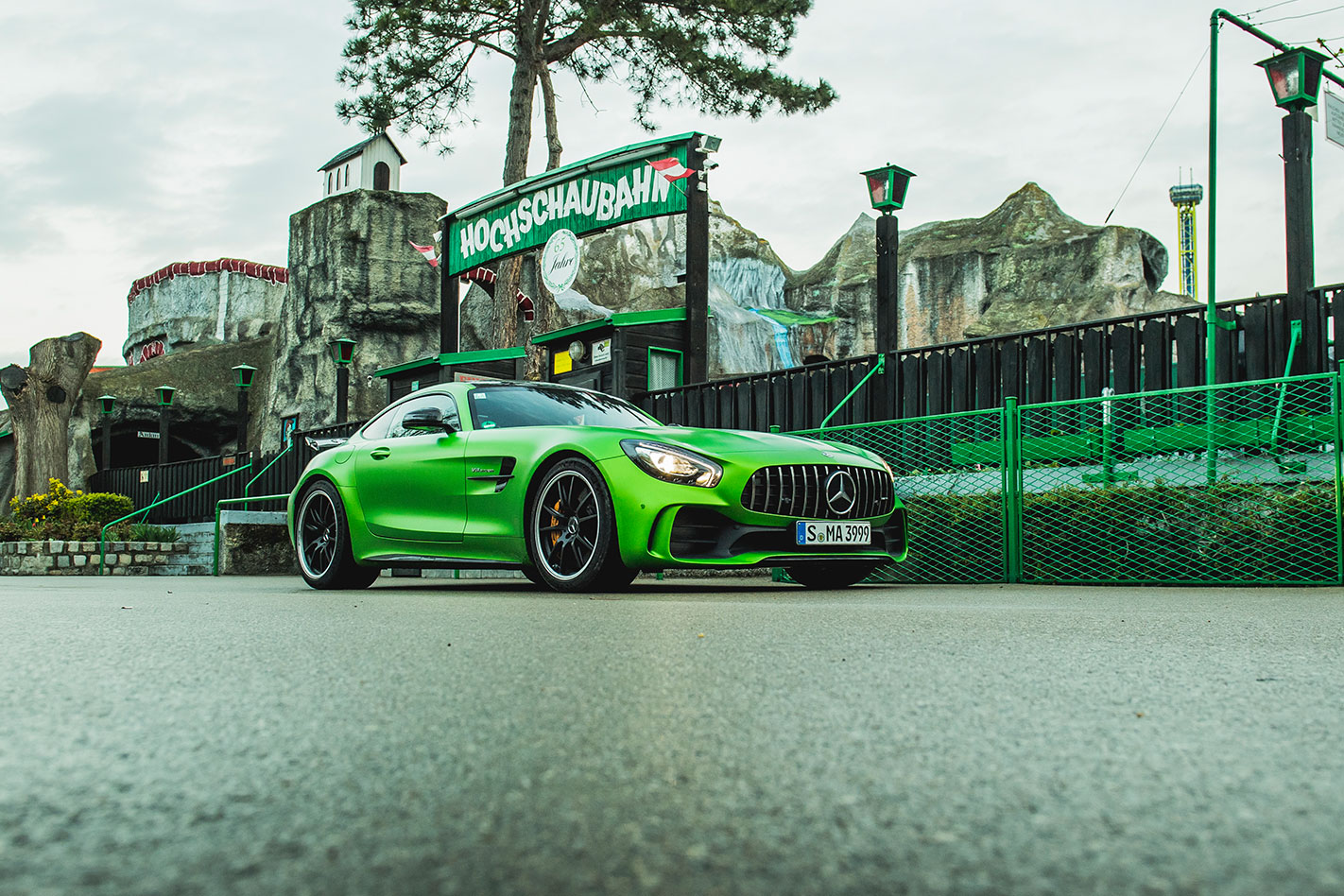
Your neighbours may oppose its lack of manners. Full throttle acceleration is accompanied by acoustic earthquakes, accentuated by artificial heel and toeing, overrun histrionics and howling part-throttle blasts.
2018 Chevrolet Camaro ZL1 1LE sets Camaro ‘Ring record
Both cars reach a top speed of 318km/h, hit 100km/h in less than four seconds and consume an identical 19.2L/100km while being put through their paces on test. The two-day, dawn-to-dusk experience includes lengthy flat-out stints, tricky Austrian back roads, city crawling and an hour-long belt around Wachauring racetrack an hour west of Vienna.
In more considered conditions these two would yield better fuel economy, but when all your ambitions must be crammed into just 48 hours, frequent pit stops are mandatory for car and driver.
Active roll control: Geek speak
Selecting a route free of watching police eyes, but full of challenging terrain, is the order of the day with these two. Once again the Porsche takes the lead, weaving its chiselled nose in and out of Austria with verve.
Beneath its sleek, go-fast body is a host of high-tech aids. The GT3’s wheelbase morphs with rear-wheel steering, but the dynamic package extends to adjustable dampers, big tyres (245/35 ZR20 front, 305/30 ZR20 rear), active engine mounts and a host of sophisticated electronics. The GT R shares most of these features.
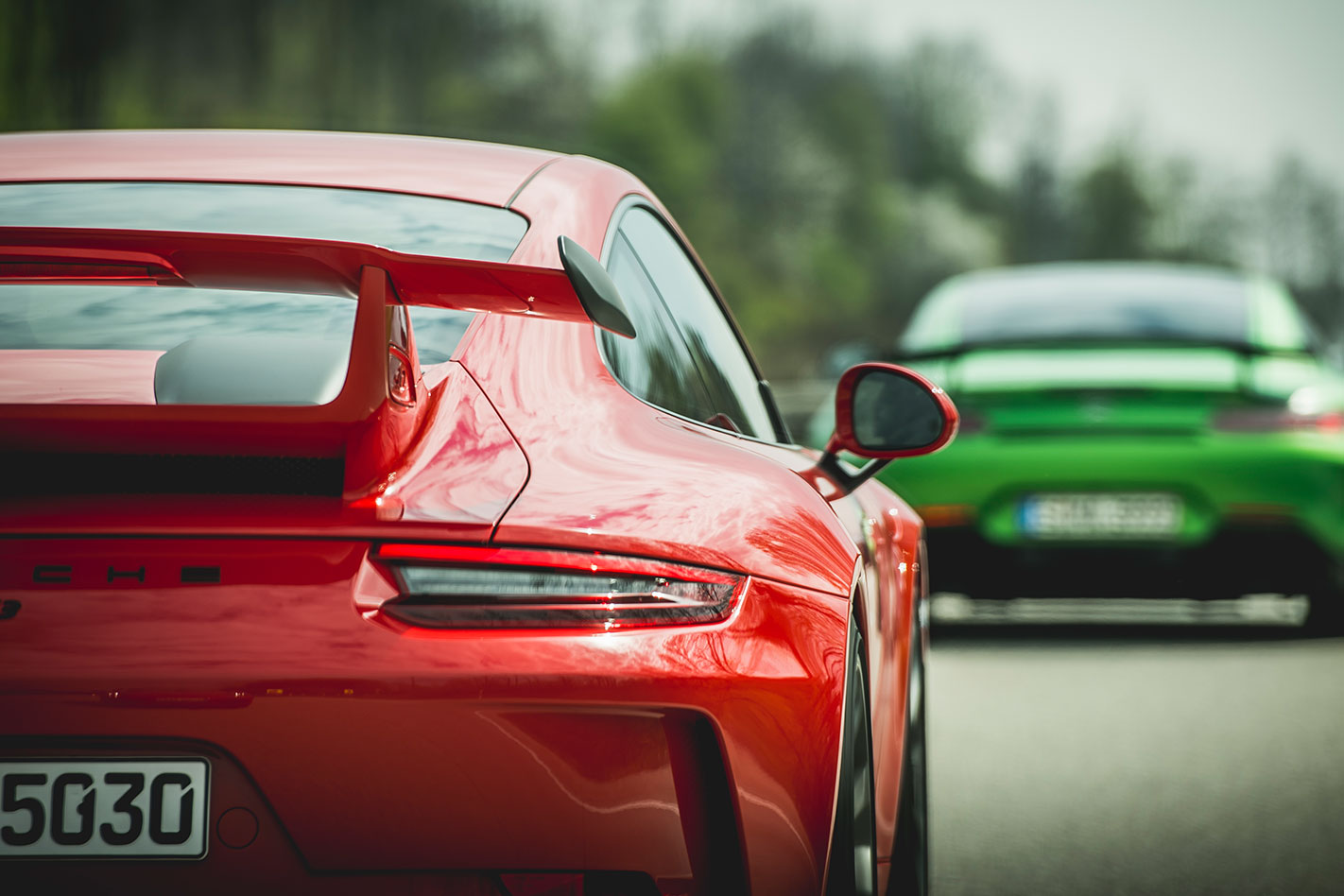
Opinion: Limited edition cars shouldn’t be unattainable
Add to this the shorter wheelbase (2457mm against 2630mm) as well as the 40:60 per cent rear-bias weight distribution, and you know why the Porsche is the more chuckable piece of kit.
Combined with that torque figure, the big, bad Benz has 430kW under its long bonnet – 62kW more than the Porsche. It also explains why it keeps winning the dragstrip duels on the autobahn. Yet it’s not in terms of top speed, it is in-gear acceleration. As soon as a straight comes into sight, the GT R makes up for all the ground it has lost to the GT3 in the bends left behind.
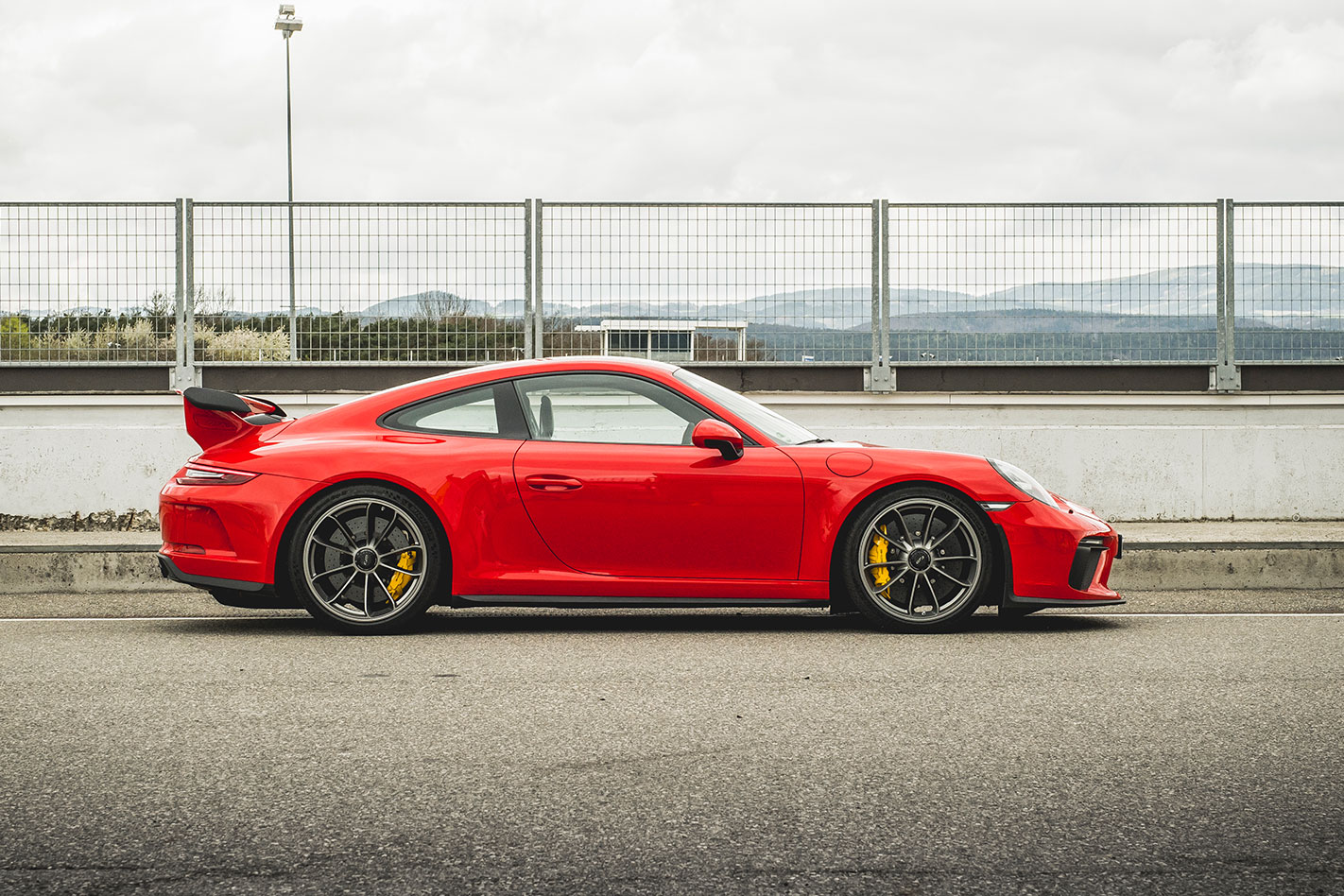
That’s 0.5sec faster than the more involving manual, which is once again an option (and sadly not available until October, hence why we have a PDK for this test).
Porsche 911 GT2 RS revealed at E3
As we meander east along the river Danube towards Vienna the cars’ different characters evolve in different sections. On one side, there is the GT R. It’s more GT than R, but only when given a long leash. On the other is the GT3 – more R than GT, even though the sharper GT3 RS is still to come. Despite its slightly more compliant suspension, the Porsche struggles to relax, let go and drop in revs.
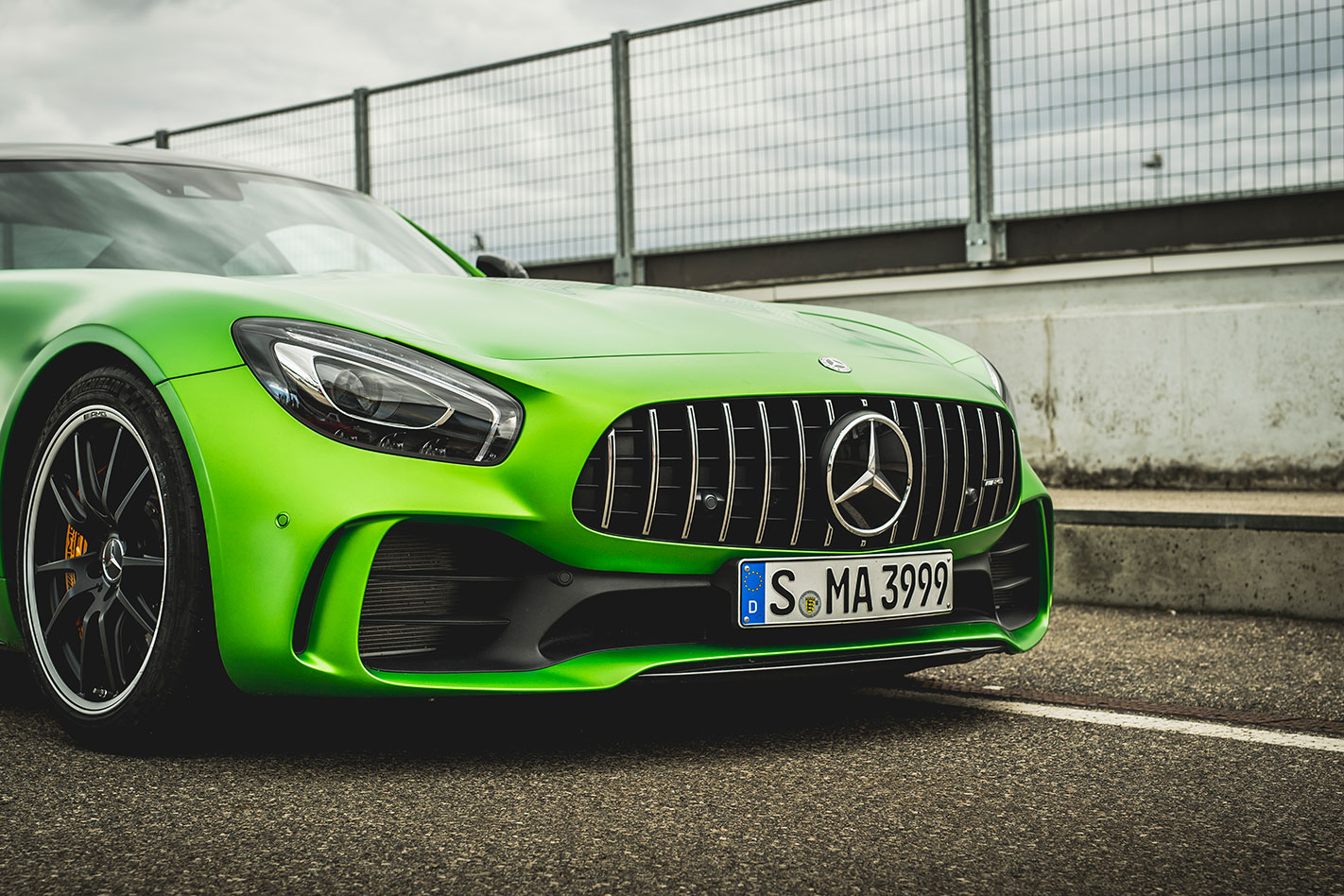
This shootout is poised to reveal the strengths and weaknesses of two diametrically opposed engineering concepts. In terms of traction, with its ability to put all its weight and energy on its hind legs, the Porsche wins. When it comes to turn-in, it’s a dead heat – at least in the dry when the tyres bite until the speed is too silly for public roads. A clear win for the AMG comes by way of mid-range grunt.
The torque tsunami from 1900 to 5500rpm more than compensates for the boxer’s extra 2000rpm at the top end.
Six differences for the next Porsche 991.2 911 GT3
Although both coupes are crammed with high technology, they could still do with industry-first innovations such as heated tyres. Why? Because on cold rubber, traction is iffy and cornering grip can be a guessing game. While AMGs usually wriggle their tail before ESP quickly catches it, 911s have been known to either understeer or oversteer in equally dramatic fashion.
The Porsche GT3 can counter this by pulling both shift paddles at the same time, essentially putting the gearbox into neutral. Or, for the drifters among us, it’s basically popping the clutch. At any rate, fast cornering is all about torque management and steering balance. The level of tactility is commendably high no matter which steering wheel you grab, but control (and the confidence it entails) remains an art form.
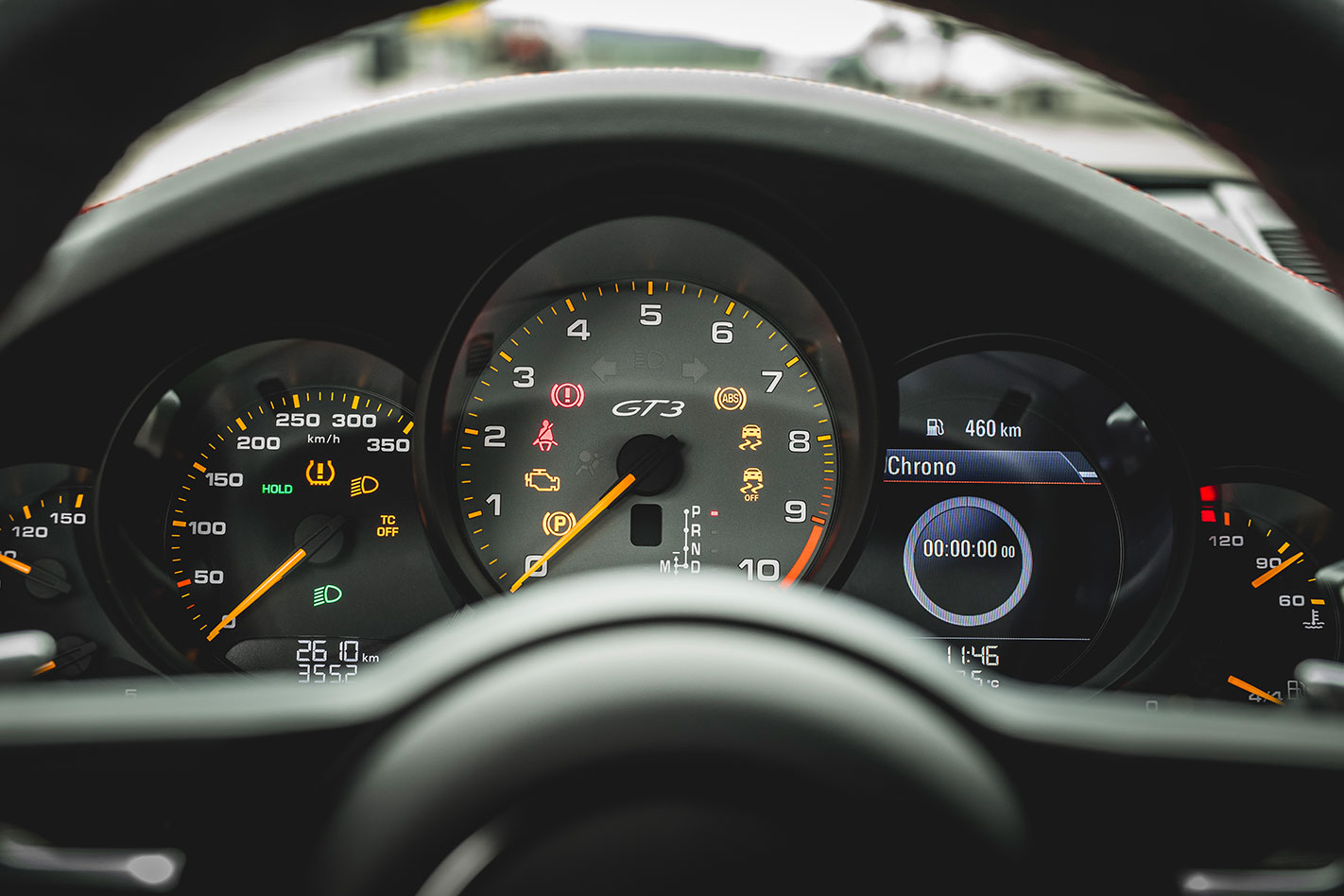
Perhaps switching the electronic nannies all the way off in the GT R isn’t such a good idea. Luckily there are varying levels of electronic safety net, nine in fact, adjustable via a dial on the centre console. Like a volume button for the electronics.
Porsche 997 GT3 with LS3 conversion for sale
The buttons on the old-fashioned centre console of the GT3 invite you to turn up the exhaust volume, adjust the shock absorber calibration, alter the drivetrain response, and deactivate ESP either on its own or together with TC. It’s a straightforward ergonomic arrangement – no drive-mode selector, no tweaking of springs and steering, no personalised mix-and-match program.
In classic GT tradition, this is not a blended 911 like the Turbo S – it’s the chef’s selection served straight up. The 991.2 GT3 is a slightly more accessible set-up with fewer rough edges. It’s still totally involving while being charmingly viceless.
Limited edition Mercedes-AMG GT3 Edition 50 revealed
In many ways, the GT R is the brat of the duo. Emphatically loud and outlandishly fast. However, in contrast to the almost austere driver environment favoured by Porsche, the AMG is a true luxe sledgehammer.
An insatiable long-distance mile gobbler and a pragmatically practical daily driver, this is as much a Mercedes as it is a bespoke AMG. Despite the bulk, the GT R cabin is somewhat overcrowded and snug, something that’s not helped by the unheated, body-hugging racing seats which only adjust for reach.
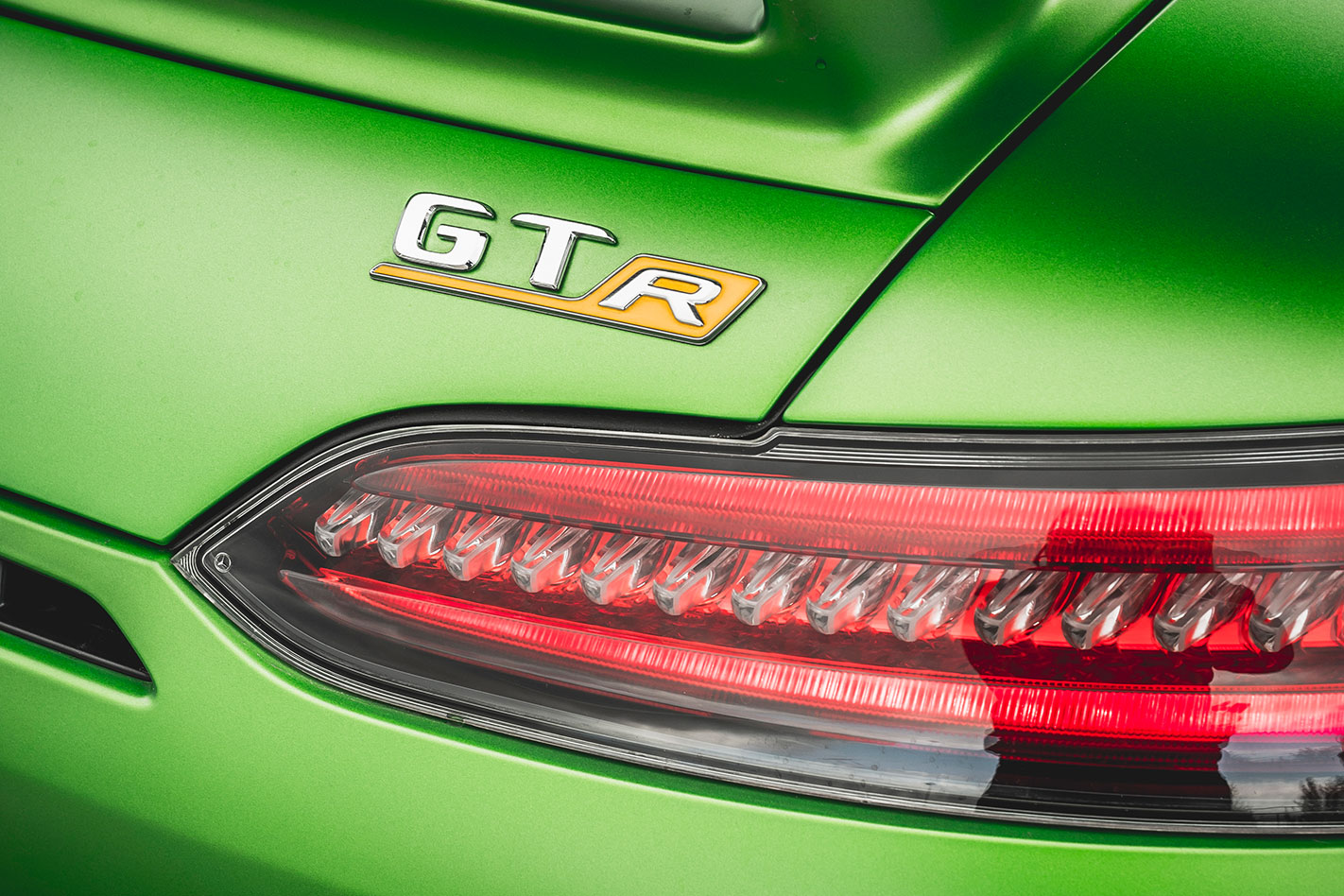
Mercedes-AMG GT R Nurburgring lap
Although, with a bit of luck, a last-minute opening becomes available at the Wachauring – it’s less grand, but just as demanding. With the exception of a second-gear corner at the end of the start-finish straight, it’s all third and fourth-gear stuff. Sure enough, a midday shower pushes the grip level from low to high risk. In view of the cold tyres and the marbles framing the racing line, ambition quickly gives way to precaution.
Under blue skies, the AMG goes out first to set the pace. And what an awesome pace it is. Do not underestimate this car. It is more than a low-end torque monster or master of the power slide.
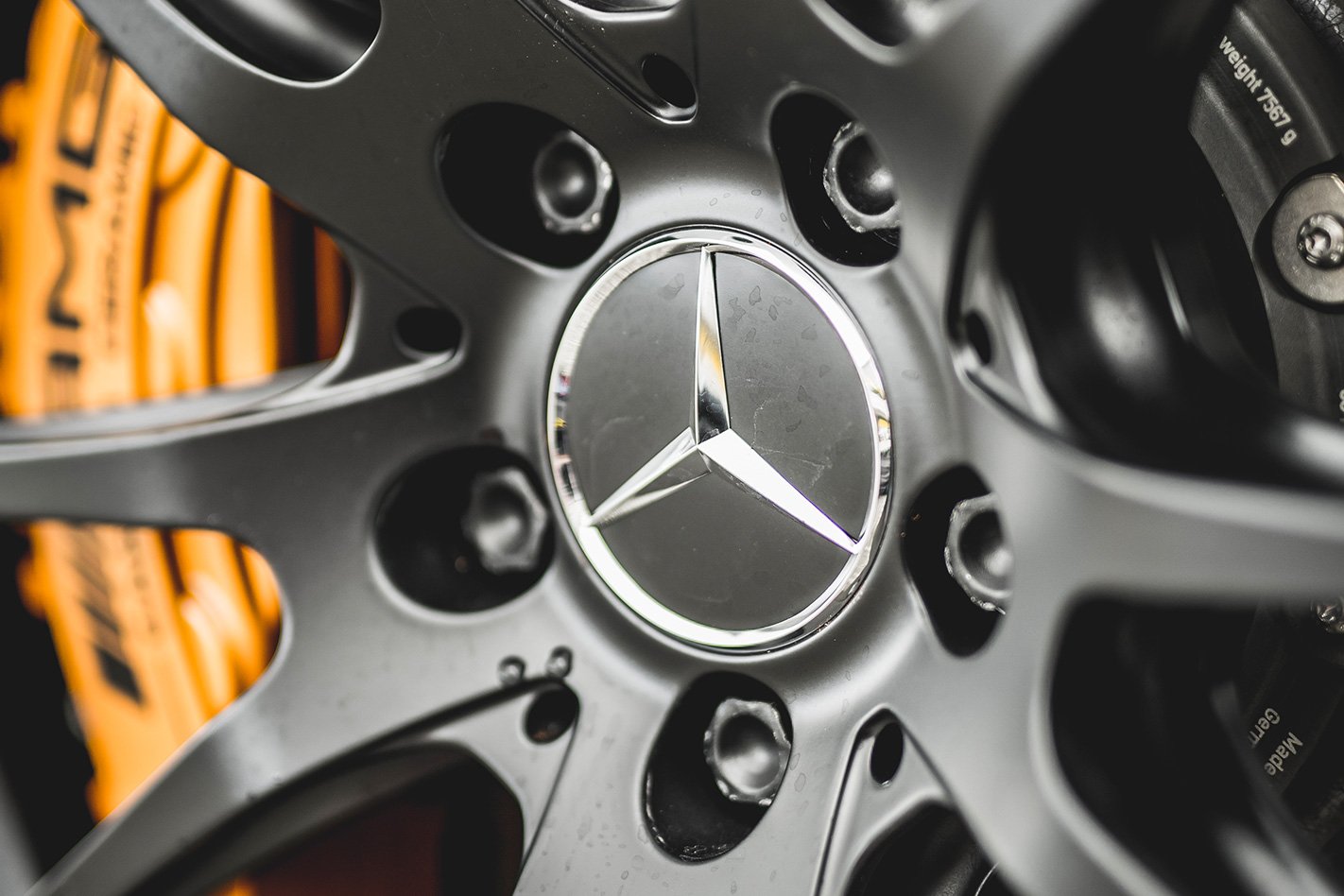
Mercedes-AMG GT R sets Bathurst lap record
Even on warm rubber, moments of understeer are taking turns with angry, shoulder-shrugging antics, so traction control definitely has a role to play. Soon the grip is back and we push the envelope again by tightening lines, straddling kerbs and braking later and later. Turn-in is reassuringly positive, torque begs to be fed earlier and soon enough the right hand is once more reaching for that magic yellow traction-control knob.
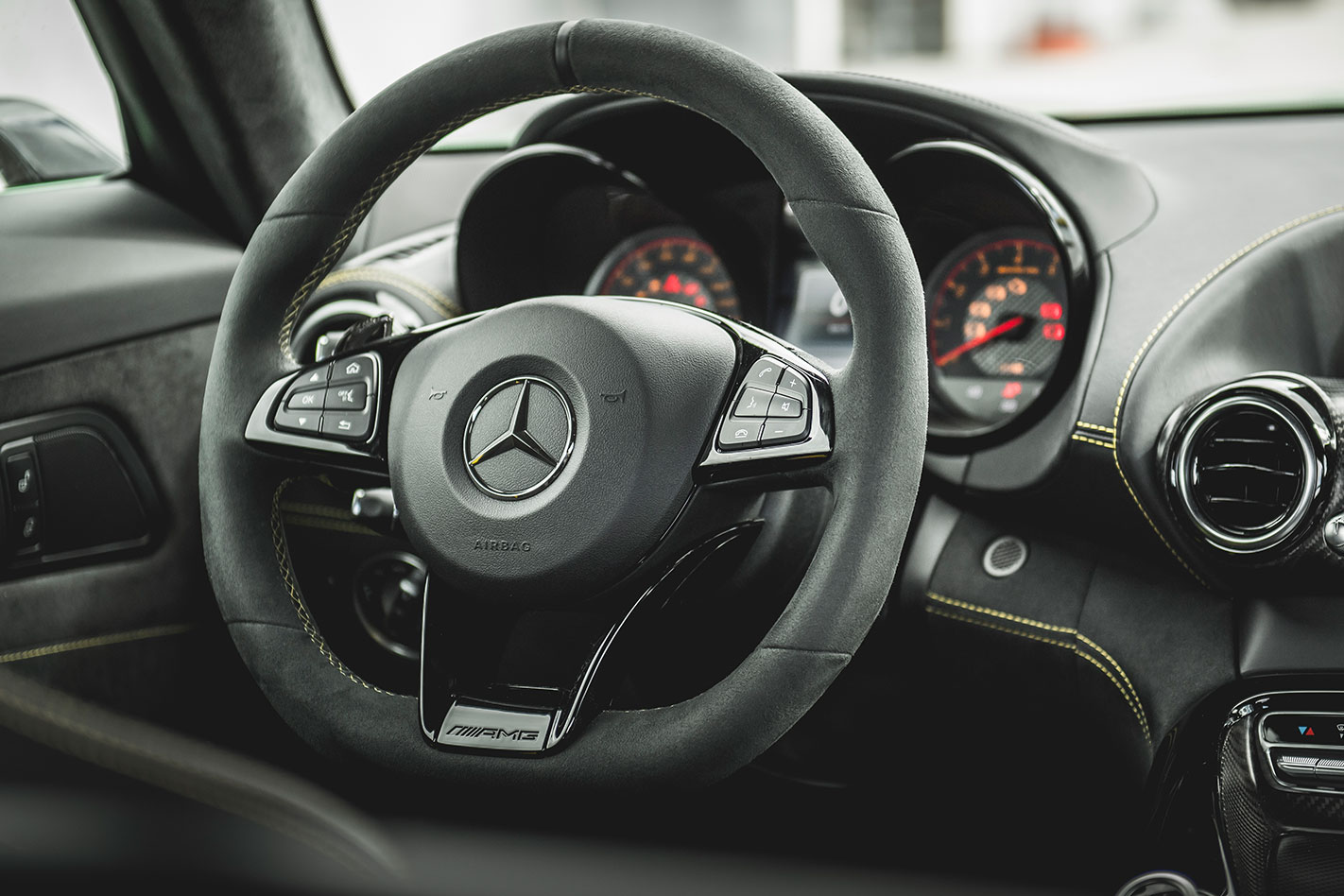
Stepping from the world of AMG into the Porsche orbit is like entering a different universe, which happens to be spinning at a near-identical speed. Yet it’s one addicted to high revs, late upshifts and even later braking manoeuvres. You can fall into pupil-widening understeer, but it can be quelled with a change of approach as the rear-wheel steering tightens the arc.
Performance Car Podcast: Mercedes-AMG C63 S
In ESP Off mode, small flames are licking behind the seat, but it takes a second stab at the button to spark a proper blaze. The endlessly capable 911 pushes, kicks and tugs when accelerating hard past apexes and through corners – but so does the tap-dancing, fierce fighting GT R.

2017 Detroit Motor Show: Porsche 911 GTS revealed
It lays the power down like a steamroller on steroids and it defies g-forces long and hard. However, while it can carve out a small lead in terms of a circuit conqueror, as hard as it may try, it can’t pull away from its opponent overall.
Hop back in the GT R, priced from $349,000, and you will be just as fast. Despite the completely different means of fusing progress and adhesion, the sharper still steering and the readily available excess of torque makes the rather ostentatious muscle coupe from Affalterbach an equally exciting drive.

Speed secrets: Porsche Sport Driving School
Ultimately it’s not really about picking a winner as both are automotive excellence. An initial drive of the GT R at its launch rendered it not quite a five-star car, but greater exposure against one of its fiercest rivals proves that it is a match for its German peer. Throughout a glorious 48 hours there was never a race to get behind a particular steering wheel.
Whatever key the hand of fate dealt, the keeper was grinning. Temptations are seldom more alluring than these.





